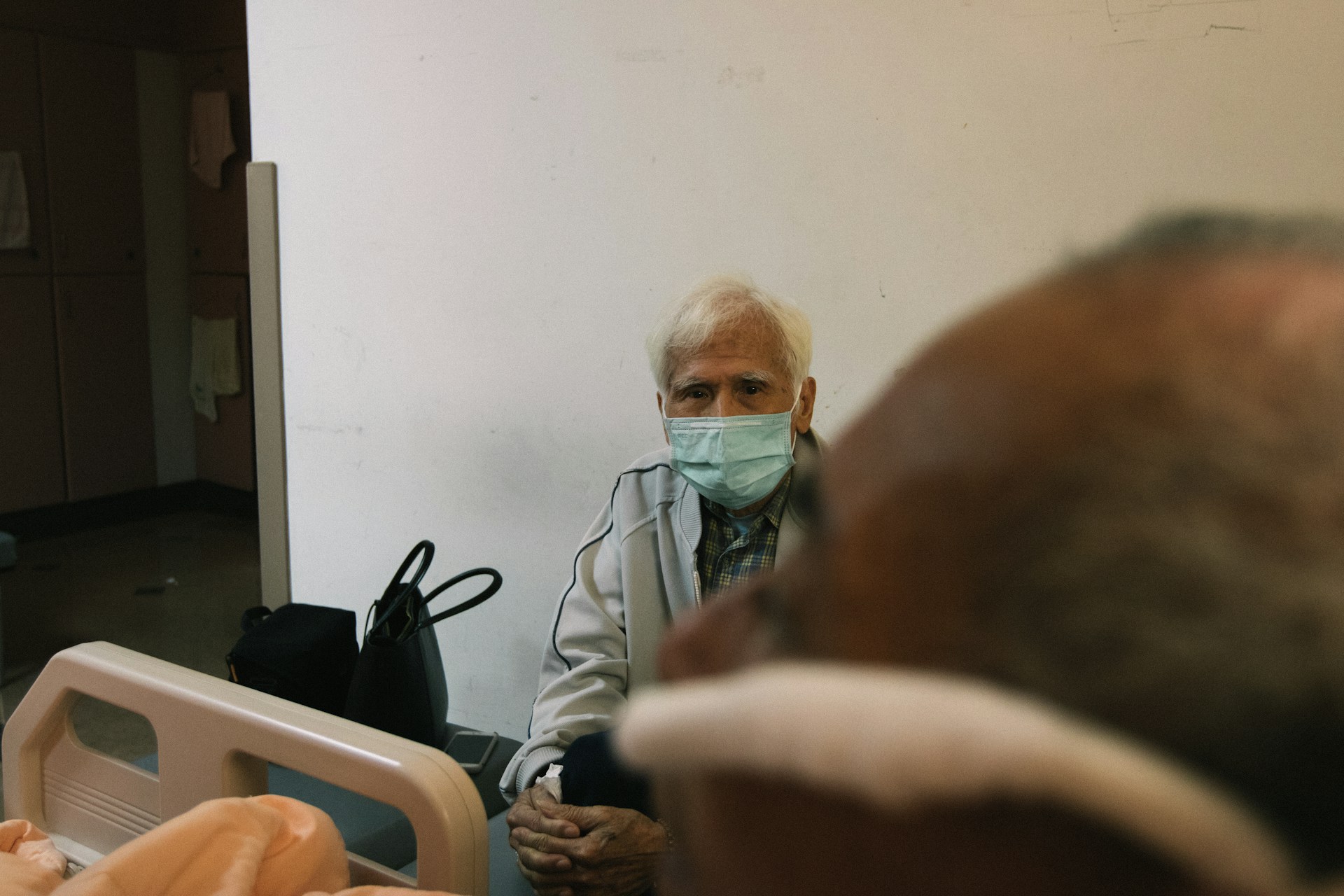Food Consumption Pattern Affects Vitamin D Levels and Quality of Life in Children during the Second Growth Spurt Period
Pola Konsumsi Makanan Mempengaruhi Kadar Vitamin D dan Kualitas Hidup Anak pada Masa Growth Spurt Kedua

Downloads
Background: The second growth spurt period needs attention related to the intake of macro-nutrients and micro-nutrients, including vitamin D. So far, the evaluation of vitamin D has received less attention if indoor activity patterns exacerbate it and imbalanced food consumption patterns, it raises concern to trigger vitamin D deficiency and affect the children growth, development and quality of life.
Objectives: To determine the relationship between children's consumption patterns on vitamin D levels, weight, height, and quality of life of children aged 10-12 years.
Methods: Observational research with the cross-sectional design was conducted on 40 children 10-14 years old without physical disability from Pondok Kun Assalam Sentono and Madrasah Ibtidaiyah At-Taqwa Semarang, Indonesia. All subjects were measured consumption patterns using the Food Frequency Questionnaire (FFQ), blood levels of vitamin D, height, weight, leg length, and quality of life measured using the Pediatric Quality of Life Inventory (PedsQL).
Results: The results showed that out of 40 subjects, only 3 (7.5%) children had sufficient vitamin D levels (≥30 µg/mL). There was a significant relationship between food consumption patterns and blood vitamin D levels (p<0.01), height, weight, leg length, and quality of life (p<0.05). The Spearman correlation coefficient values, respectively, between food consumption patterns and blood vitamin D levels, height, weight, leg length, and quality of life were; 0.404; 0.290; 0.369; 0.380; 0.321.
Conclusions: The food consumption patterns of children in the second growth spurt period need to be considered because they are associated with vitamin D levels, height, weight, and quality of life.
Jew, S.et al. Nutrient Essentiality Revisited. J. Funct. Foods 14, 203–209 (2015).
Harrison, M.Eet al. Systematic Review of the Effects of Family Meal Frequency on Psychosocial Outcomes in Youth. can. Fam. Physicians 61, (2015).
Tanaka, J.et al. Relationship between Dietary Patterns and Stunting in Preschool Children: A Cohort Analysis from Kwale, Kenya. Public Health 173, 58–68 (2019).
Frank, DAet al. Heat or eat: the Low Income Home Energy Assistance Program and nutritional and health risks among children less than 3 years of age. Pediatrics 118, (2016).
Cutts, DBet al. US Housing Insecurity and the health of very Young Children. Am. J. Public Health 101, 1508–1514 (2011).
Nabunya, P., Ssewamala, FM & Ilic, V. Family Economic Strengthening and Parenting Stress Among Caregivers of AIDS-Orphaned Children: Results from a Cluster Randomized Clinical Trial in Uganda. Child. Youth Serv. Rev. 44, 417–421 (2014).
Goodman, ML, Seidel, SE, Kaberia, R. & Keizer, PH How can We Improve Healthcare Access and General Self-Rated Health among Orphans and Vulnerable Children? Findings from a Kenyan Cross-Sectional Study. int. J.Public Health 60, 589–597 (2015).
Ohnishi, M.et al. Associations among Anthropometric Measures, Food Consumption, and Quality of Life in School-Age Children in Tanzania. J.Rural Med. JRM 12, 38 (2017).
Kawasaki, R., Tabuchi, Y. & Ohnishi, M. Factors Associated with Food Consumption among Adolescent Orphans in Nigeria.æ°‘æ—衛生 80, 199–207 (2014).
Gaesser, GA Carbohydrate Quantity and Quality in Relation to Body Mass Index. O'clock. Diet. Assoc.107, 1768–1780 (2016).
Olfert, M.Det al. Self-Reported vs. Measured Height, Weight, and BMI in Young Adults. int. J.Environ. Res. Public Health 15, (2018).
Juntaping, K., Chittawatanarat, K., Prasitwattanaseree, S., Chaijaruwanich, J. & Traisathit, P. Relationship between Height-Weight Difference Index and Body-Fat Percentage Estimated by Bioelectrical Impedance Analysis in Thai Adults. Scientific World Journal. 2017, (2017).
Flegal, KM, Kit, BK & Graubard, BI Body Mass Index Categories in Observational Studies of Weight and Risk of Death. Am. J. Epidemioles. 180, 288–296 (2014).
Kuntari, T., Aisyah Jamil, N. & Kurniati, O. Risk Factors of Malnutrition in Toddlers Malnutrition Risk Factor for Under Five Years.(2016)
The Ministry of Health of the Republic of Indonesia. National Health Survey. Journal of Nursing and Health (JNH) vol. 3 (Ministry of Health of Indonesia, 2014).
Health Research and Development Agency for Central Java Province.Central Java Province Report Riskesdas 2018. Ministry of Health of the Republic of Indonesia (2019).
Miranty, S. & Dr. Toto Sudargo, S. . MK ; dr, IDPPSP Correlation between Food Intake and Nutritional Status on the Quality of Life of Patients with Systemic Lupus Erythematosus. Proceedings. http://etd.repository.ug.ac.id/home/detail_pencarian/90008 (2015).
Houben-van Herten, M., Bai, G., Hafkamp, E., Landgraf, JM & Raat, H. Determinants of Health-Related Quality of Life in School-Aged Children: A General Population Study in the Netherlands. PLoS One 10, e0125083 (2015).
Ohnishi, M.et al. Associations among Anthropometric Measures, Food Consumption, and Quality of Life in School-Age Children in Tanzania. J.Rural Med. 12, 38–45 (2017).
Pienaar, AE Prevalence of Overweight and Obesity among Primary School Children in A Developing Country: NW-CHILD Longitudinal Data of 6-9-yr-old Children in South Africa. Obese BMC. 2, (2015).
Varni, JW, Seid, M. & Kurtin, PS PedsQLTM4.0: Reliability and Validity of the Pediatric Quality of Life InventoryTM Version 4.0 Generic Core Scales in Healthy and Patient Populations. med. Care 39, 800–812 (2015).
Thornton, K. & Villamor, E. Nutritional Epidemiology. encycl. Food Heal. 104–107 (2015) doi:10.1016/B978-0-12-384947-2.00494-3.
WHO Multicentre Growth Reference Study Group. WHO Child Growth Standards: Length/Height-for-Age, Weight-for-Age, Weight-for-Length, Weight-for-Height and Body Mass Index-for-Age: Methods and Development. Geneva, Switzerland. Acta Pí¦diatrica 95, 76–85 (2014).
Kim, HJ, Lee, JY, Kim, TJ & Lee, JW Association between Serum Vitamin D Status and Health-Related Quality of Life (HRQOL) in an Older Korean Population with Radiographic Knee Osteoarthritis: Data from the Korean National Health and Nutrition Examination Surveys (2010-2011). Health Qual. Life Outcomes 13, 1–9 (2015).
Van Dijk, GM, Veenhof, C., Lankhorst, GJ & Dekker, J. Limitations in Activities In Patients With Osteoarthritis of the Hip or Knee: The Relationship with Body Functions, Comorbidity And Cognitive Functioning. disabled. Rehab. 31, 1685–1691 (2012).
Skalska, A., GaÅ‚aÅ›, A. & Grodzicki, T. 25-Hydroxyvitamin D and Physical and Cognitive Performance in Older People with Chronic Conditions. Pol. Arch. med. Wewn. 122, 162–169 (2012).
Kinra, S., Rameshwar Sarma, KV, Hards, M., Smith, GD & Ben-Shlomo, Y. Is relative leg length a biomarker of childhood nutrition? Long-term follow-up of the Hyderabad nutrition trial. int. J. Epidemioles. 40, 1022–1029 (2011).
Mazahery, H. & von Hurst, PR Factors Affecting 25-hydroxyvitamin D Concentration in Response to Vitamin D Supplementation. Nutrients 7, 5111–5142 (2015).
Fernald, LCH, Kariger, P., Hidrobo, M. & Gertler, PJ Socioeconomic Gradients in Child Development in Very Young Children: Evidence from India, Indonesia, Peru, and Senegal.Proc. Christmas. Acad. sci. USA 109, 17273–17280 (2012).
Julia, M., van Weissenbruch, MM, Delemarre-van de Waal, HA & Surjono, A. Influence of Socioeconomic Status on the Prevalence of Stunted Growth and Obesity in Prepubertal Indonesian Children. Food Nutr. Bull. 25, 354–360 (2014).
Giles, J. & Satriawan, E. Protecting Child Nutritional Status in the Aftermath of a Financial Crisis: Evidence from Indonesia. J. Dev. Econ. 114, 97–106 (2015).
Beal, T., Tumilowicz, A., Sutrisna, A., Izwardy, D. & Neufeld, LM. A Review of Child Stunting Determinants in Indonesia. Maternity. Child Nutr. 14, (2018).
Sandjaja, S.et al. Food Consumption and Nutritional and Biochemical Status of 0,5-12-Year-Old Indonesian Children: The SEANUTS study. Brother J.Nutr. 110, (2013).
DeLuca, HF Overview of General Physiologic Features and Functions of Vitamin D. Am. J. Clin. Nutr. 80, (2014).
Holick, MF Medical Progress: Vitamin D deficiency. N. Engl. J.Med. 357, 266–281 (2015).
Norman, AW & Bouillon, R. Vitamin D Nutritional Policy Needs a Vision for the Future. Exp. Bio. med. 235, 1034–1045 (2010).
Christakos, S.et al. Vitamin D: Beyond the bones. Ann. NY Acad. sci. 1287, 45–58 (2013).
Mihai, R. & Farndon, JR Parathyroid Disease and Calcium Metabolism. Brother J. Anaesth. 85, 29–43 (2012).
Ray, RL, Rahmawati, F. & Andhini, D. The Relationship Between Knowledge and Attitudes of Parents And the Quality of Life of Children with Thalassemia [Correlation between knowledge and attitude of parents and quality of life of children with thalassemia]. Seminar Proceedings. Nas. Nursing 4, 79–85 (2018).
Mediani, HS, Nurhidayah, I., Lusiani, L. & Panigoro, R. Predicting Factors Impacting the Quality of Life of Thalassemic School Age Children in Indonesia. J. Adv. Pharm. educ. Res. 11, 81–85 (2021).
Aji, DN, Silman, C., Aryudi, C., Andalia, D. & Children, K. Factors Associated with the Quality of Life of Thalassemia Major Patients at the Thalassemia Center, Department of Pediatrics, RSCM. Sari Pediatr. 11, 85–89 (2010).
Nugroho, ISP & Muniroh, L. Correlation between Consumption of Food Sources of Calcium and Physical Activity with Lacto Ovo Vegetarian Bone Density at the Buddha Tzu Chi Foundation, Surabaya. Indonesian Nutrition Media. 12, 64 (2018).
Garciá Rodríguez, M., Romero Saldaní£, M., Alcaide Leyva, JM, Moreno Rojas, R. & Molina Recio, G. Design and Validation of a Food Frequency Questionnaire (FFQ) for the Nutritional Evaluation of Food Intake in the Peruvian Amazon. J. Heal. Popul. Nutr. 38, 1–11 (2019).
Scaglioni, S.et al. Factors influencing children's eating behaviors. Nutrients 10, (2018).
Van Ansem, WJC, Schrijvers, CTM, Rodenburg, G. & Van De Mheen, D. Children's Snack Consumption: Role of Parents, Peers and Child Snack-Purchasing Behavior. Results from the INPACT study. euro. J.Public Health 25, 1006–1011 (2015).
Russell, CG, Worsley, A. & Campbell, KJ. Strategies used by Parents to Influence their Children's Food Preferences. Appetite 90, 123–130 (2015).
Rollins, BY, Savage, JS, Fisher, JO & Birch, LL Alternatives to Restrictive Feeding Practices to Promote Self-Regulation in Childhood: A Developmental Perspective. Pediatr. Obes. 11, 326–332 (2016).
Eid Al Agha, A., Al Baradi, WR, Al Rahmani, DA & Simbawa, BM. Associations between Various Nutritional Elements and Weight, Height and BMI in Children and Adolescents. J. Patient Care 02, (2017).
Ruottinen, S.et al. Carbohydrate Intake, Serum Lipids and Apolipoprotein E Phenotype Show Association in Children. Acta Paediatr. int. J. Paediatr. 98, 1667–1673 (2009).
DeBoer, MD, Agard, HE & Scharf, RJ Milk Intake, Height and Body Mass Index in Preschool Children. Arch. Dis. child. 100, 460–465 (2015).
Copyright (c) 2023 Amerta Nutrition

This work is licensed under a Creative Commons Attribution-ShareAlike 4.0 International License.
AMERTA NUTR by Unair is licensed under a Creative Commons Attribution-ShareAlike 4.0 International License.
1. The journal allows the author to hold the copyright of the article without restrictions.
2. The journal allows the author(s) to retain publishing rights without restrictions
3. The legal formal aspect of journal publication accessibility refers to Creative Commons Attribution Share-Alike (CC BY-SA).
4. The Creative Commons Attribution Share-Alike (CC BY-SA) license allows re-distribution and re-use of a licensed work on the conditions that the creator is appropriately credited and that any derivative work is made available under "the same, similar or a compatible license”. Other than the conditions mentioned above, the editorial board is not responsible for copyright violation.












































